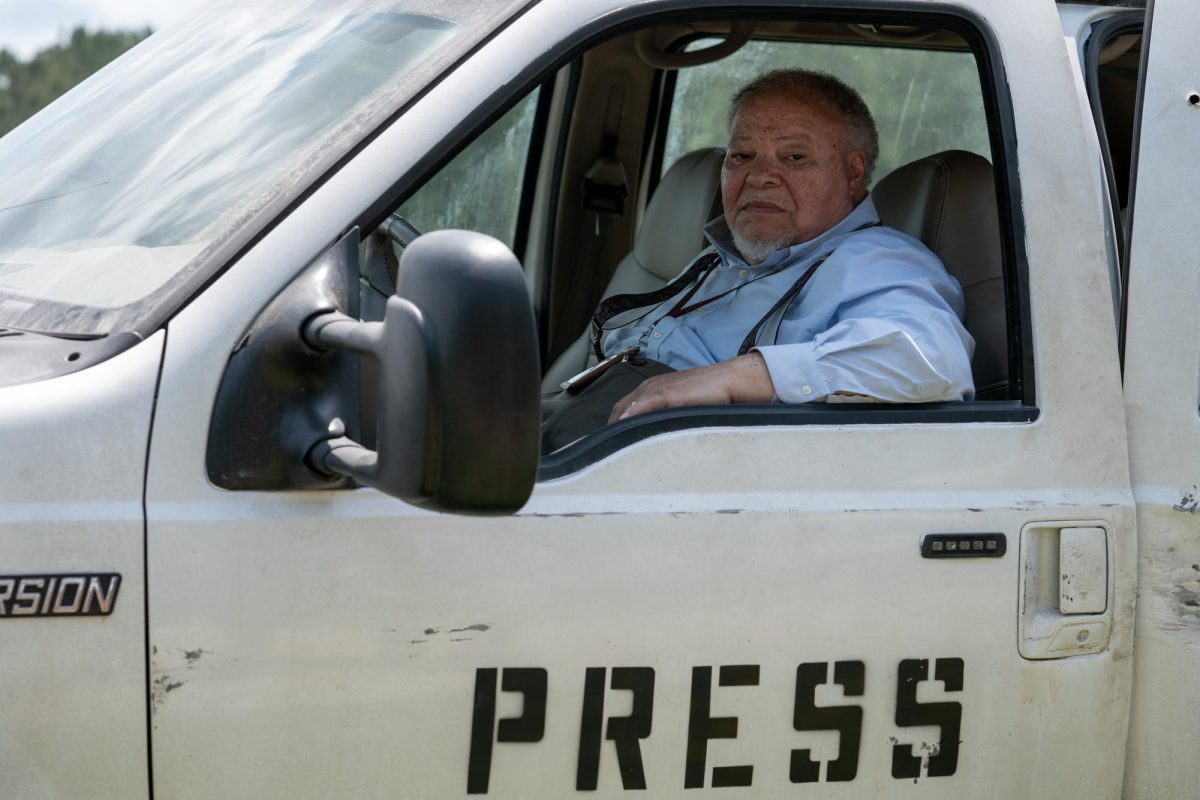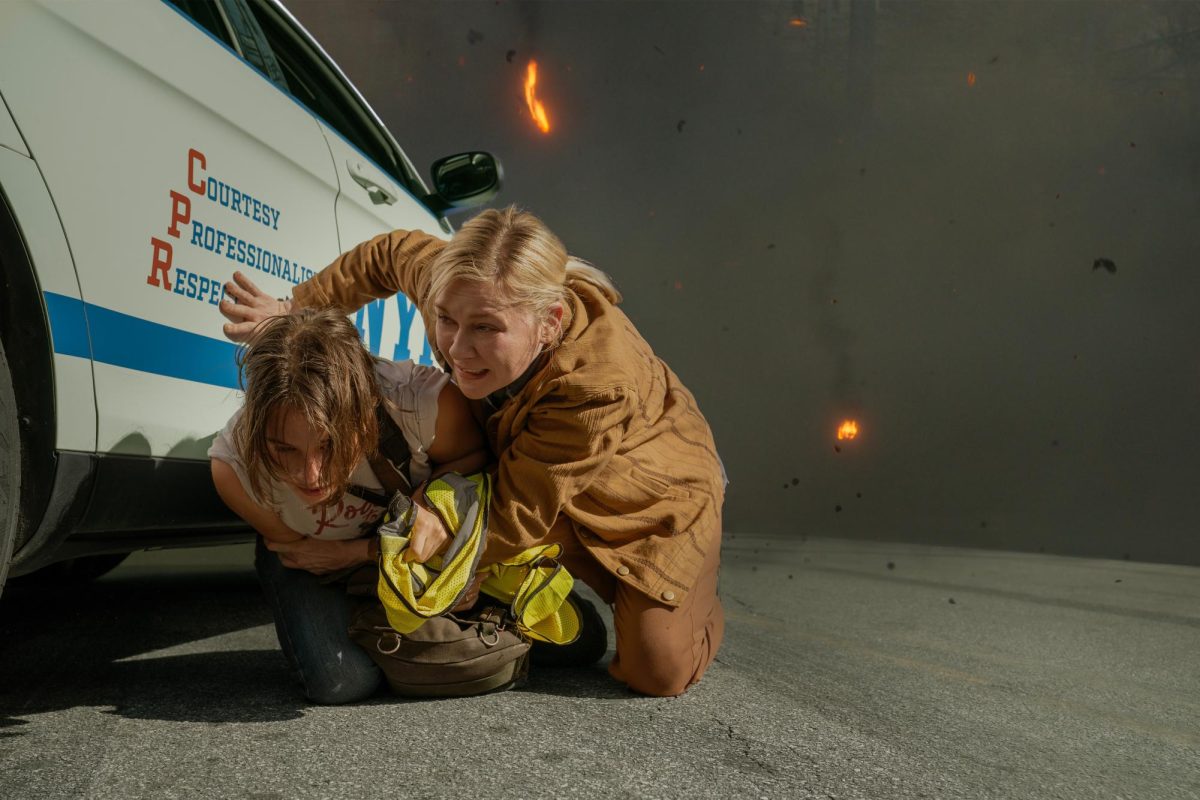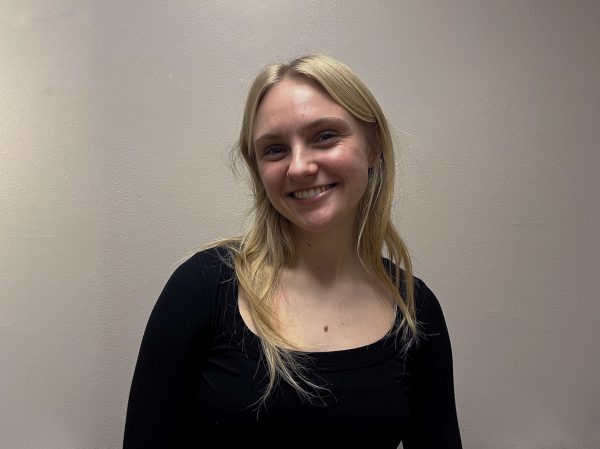Though the United States has not experienced anything like the dystopian America portrayed in the 2024 A24 film, “Civil War,” the concept of war is not new to the world, and certainly not to journalists.
Directed by Alex Garland, “Civil War” attempts to portray the experiences of photojournalists facing the uncertainty of life in the midst of a nation-wide crisis.
The film received 82% rotten tomatoes and has earned about $25 million since its release on April 24. Leading up to the movie, I was expecting it to live up to the positive reviews — and was excited to watch a movie about the profession I am studying.
Garland’s previous work includes “Ex Machina” and “Men,” two films with complex ideas about humanity and reality. He keeps this momentum in “Civil War,” which follows three reporters accompanied by a young, aspiring photojournalist as they race against time to Washington D.C. before the war is brought to the White House.
In the team of journalists is legendary photojournalist Lee, played by Kirsten Dunst, and Joel, played by Wagner Moura. Sammy is an older, mentor companion played by Stephen McKinley Henderson who works for “what’s left of the New York Times,” Joel said.
During a street protest turned violent, Lee helps Jessie, played by Cailee Spaeny, away from the chaos. Jessie, a young photographer, is in awe of meeting one of her idols and finds her way into their journey from New York to Washington D.C. to photograph and interview the president.
For journalists, a dystopian, war-ridden America would be both a dream-come-true and one’s greatest nightmare. The team faces endless possibilities to cover big stories and photograph the world around them while encountering near-death situations.
Each journalist in the film demonstrates an internal war of journalism ethics while attempting to capture the perfect shot during shootouts they come across on the road.
The shootouts consist of gunshots and the clicking of camera shutters. Like the rebels in the film attempting to shoot their opponents, the journalists carefully but quickly aim their cameras to get their own perfect shot.
Lee, reluctant to bring Jessie along, warns her of the possibility of being shot and killed on their journey.
“Would you shoot that moment? If I got shot?” Jessie asks Lee.
Lee responds with little to no emotion, “What do you think?”
As the team encounters different situations and people in this lawless America, they continue to risk their lives to take photos and reach their destination. The film questions the power of photojournalism because although it has withstood the downfall of “normal” life and major newspapers, is it worth risking one’s life for?
Though I don’t often identify my aspirations as photojournalism specifically, I know the rush of adrenaline that comes with capturing the perfect shot during an event. Oddly enough, when Jessie explains in the film that she has never felt so scared for her life, but also so alive, I felt I could relate.
Whether I’m capturing the joy on people’s faces at a community event or photographing a crime scene, taking photos captures what writing an article alone cannot.
Now, would I risk my life as this group of journalists did for the sake of covering the perfect story? Probably not. But I also wouldn’t be surprised if others would thrive off of the race against time or the thrill of dodging bullets for the perfect quote or photo.
Aside from the topics and ideas discussed in the film, “Civil War’s” cinematography, pacing, casting and storyline in general make it a must-see for any audience. It unfolds unexpectedly, with full-circle moments and the perfect ending.
In the end, I enjoyed the battle with myself during the movie over whether or not I chose the safest profession. I think it’s safe to say that for the sake of all journalists, let’s hope “Civil War’s” dystopian America never becomes a reality.
Grace Stark can be reached at orionmanagingeditor@gmail.com.









